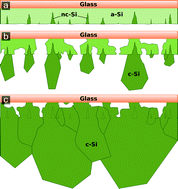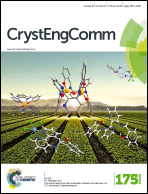Continuous polycrystalline silicon layers on glass grown from tin solutions
Abstract
Polycrystalline silicon on glass for photovoltaic applications is grown at low temperatures in a two-step process. In the first step, nanocrystalline Si (nc-Si) films are formed by direct deposition on heated glass substrates at about 400 °C. In the second step, these seed layers serve as templates for the growth of crystalline silicon (c-Si) at temperatures around 600 °C by steady-state solution growth, a process that exhibits significant similarities with float glass production. Using Sn solutions, continuous microcrystalline Si layers with a thickness of about 10 μm are grown. Structural characterization by scanning electron microscopy (SEM) and transmission electron microscopy (TEM) give insights into the growth process of both the seed layer and the thick microcrystalline layer. Chemical characterization by secondary ion mass spectrometry (SIMS) shows low impurity levels, which makes the material interesting for the use in thin-film silicon solar cells.


 Please wait while we load your content...
Please wait while we load your content...